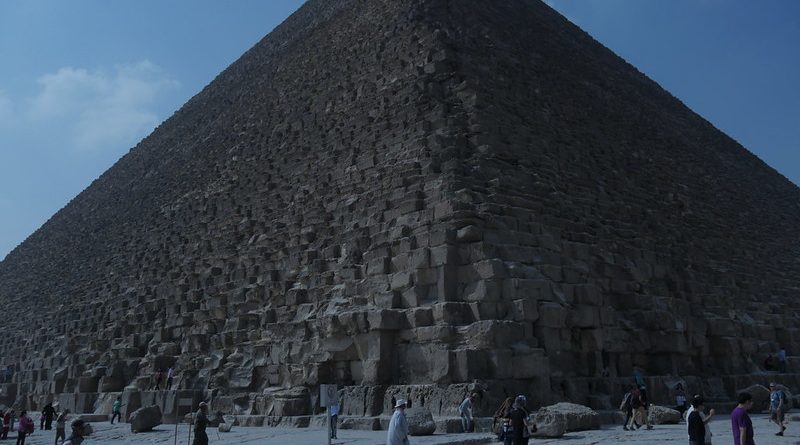Empire Builders Egypt Backgrounder
| JOURNEY GUIDE | |
| 1. HIGHLIGHTS | |
|
1. The Step Pyramid (c. 2650 BC) A magnificent tomb, nearly 5000 years old, it was the world’s first ever large building constructed from stone, designed as a stairway to heaven for the Pharaoh’s soul.
2. The Great Pyramid of Giza (c. 2560 BC) Almost certainly the world’s most famous and recognisable ancient monument, it was one of the 7 Wonders of the Ancient World, built 4500 years ago from more than 2 million blocks of stone weighing an average of over 2 tons each.
3. The Tomb of Tutankhamun (c. 1325 BC) As pyramids were much too obvious to tomb-robbers, who ransacked them all, later pharaohs opted for secretive rock-cut tombs in the Valley of the Kings. But all of these tombs were robbed too, except Tutankhamun’s, discovered by British archaeologist Howard Carter in 1922, overflowing with fabulous golden treasures.
4. Abu Simbel Temple (c. 1250 BC) A dramatic rock-cut temple carved out of a cliff face on Egypt’s southern border, fronted by 4 gigantic statues of the famously powerful pharaoh who built it – Ramesses the Great.
5. Luxor Temple (c. 1240 BC) One of ancient Egypt’s grandest temples, also built by Ramesses the Great, and home to one of Egypt’s biggest and most magnificent obelisks, 80 feet tall and weighing 250 tons.
6. The Unfinished Obelisk (date uncertain, probably c. 1500-1200 BC) Luxor Temple’s huge obelisk is tiny, however, in comparison to the gigantic obelisk that still remains today in the ancient granite quarry at Aswan – where almost all Egyptian obelisks were cut – which is around 140 feet long, and weighs a staggering 1200 tons.
7. Karnak Temple (c. 1540 – 340 BC) Built over a period of more than 1000 years, this was ancient Egypt’s biggest and most important temple, constructed on a monumental scale, covering more than a square mile.
8. Edfu Temple (c. 230 – 60 BC) Constructed relatively recently in ancient Egyptian terms – only just over 2000 years ago – this spectacularly beautiful building is ancient Egypt’s best preserved temple.
9. The Serapeum of Saqqara (c. 1350 – 30 BC) Discovered buried beneath the desert sands in 1851, the Serapeum is an extraordinary underground catacomb, built to preserve the mummified bodies of over 20 sacred bulls.
10. Philae Temple (c. 370 BC – 530 AD) Beautifully located on a small island in the middle of the Nile, Philae Temple was the last major temple where the ancient Egyptian gods were worshipped, and is also home to ancient Egypt’s very last hieroglyphs, after which the language was lost for nearly 1500 years, until it was deciphered in the C19th following the discovery of the Rosetta Stone.
|
|
| 2. CLIMATE: | |
| When To Go:
The best time to visit Egypt is in the winter between October and February, when temperatures are cool – summer is very hot.
|
|
| 3. TRAVEL: | |
| Getting There: International/domestic travel by air, sea, road (max. 100 words)
Both Cairo and Luxor have major international airports.
|
|
| 4. TOP TENS | |
| Must See and Dos – e.g. attractions or activities along the way(max. 10)
1. Philae Temple, Aswan 2. The Unfinished Obelisk, Aswan 3. Kom Ombo Temple 4. Temple of Horus, Edfu 5. Temple of Khnum, Esna
|
6. Luxor Temple 7. Karnak Temple 8. Valley of the Kings 9. Great Pyramid of Giza 10. Step Pyramid, Saqqara |
| 5. SLEEP | |
| List any hotels, guesthouses, hostels, B&Bs featured or stayed in along the route:
1. Sonesta St George Hotel, Luxor: www.sonesta.com 2. Marsam Hotel, West Bank, Luxor: www.marsamluxor.com 3. Basma Hotel, Aswan: www.basmahotel.com
|
|
| 6. USEFUL WEBSITES | |
| Websites used to research show – include tourist office, museums, galleries, iconic buildings etc. | |
| 7. USEFUL BOOKS | |
| List any books you used to research/prepare show
1. Lonely Planet Egypt 2. Rough Guide to Egypt 3. The Encyclopedia of Ancient Egyptian Architecture |
|




